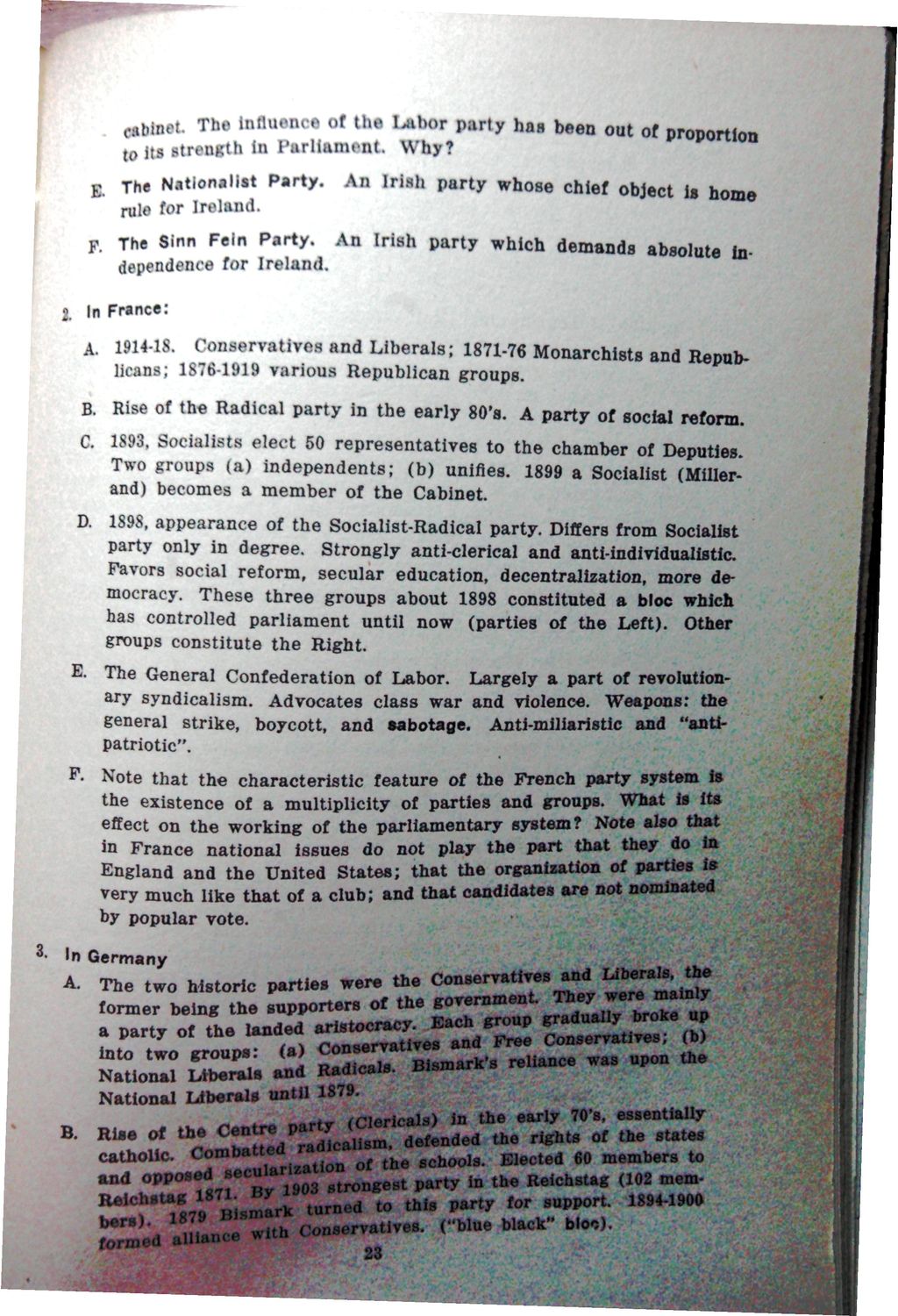Caption: War Publications - WWI Compilation 1923 - Article 48
This is a reduced-resolution page image for fast online browsing.

EXTRACTED TEXT FROM PAGE:
catunot. The Intlu.'iwo of the I^ihor party has been out of proportion to its str<nr.tti in Parliament. Why? E The Nationalist Party. rule for Irolutul. An Irish party whose chief object is home F. The Sinn Fein Party. An Irish party which demands absolute independence for Ireland. 0 In France: A. 1914-1S. conservatives and Liberals; 1871-76 Monarchists and Repubeans; ISTtJ 11*19 various Republican ernunn B. uise oi me naaicai party in the early 80's. A party of social reform. C. 1S93. Socialists elect 50 representatives to the chamber of Deputies. Two groups (a) independents; (b) unifies. 1899 a Socialist (Miller-* and) becomes a member of the Cabinet. D. 1S9S. appearance of the Socialist-Radical party. Differs from Socialist party only in degree. anti-individualis decentralization mocracy. These three groups about 1898 constituted a bloc which Left). Other groups constitute the Right. E. The General Confederation of Labor. Largely a part of revolutionary syndicalism. Advocates class war and violence. Weapons: the general strike, boycott, and sabotage. Anti-miliaristic and "anttpatriotic". F - Note that the characteristic feature of the French party system Is the existence of a multiplicity of parties and groups. What it its effect on the working of the parliamentary system? Note also that in France national issues do not play the p u t that they do in England and the United States; that the organisation of parties is very much like that of a club; and that candidates are not nominated by popular vote. In Germany A. The , . „ historic P « t l ~ « " <*• < ^ ^ T £ . 1 T 1 Z former being the supporters or tnc Each group gradually broke up a p r , or ,h. U^«. «£%&?£?£ ae c^a,,™? < W Z£ Ubwlt until 1879. S •—*• -— ~ "~ "" SSL a ' » n * National • ~ rriAricals) in the early 70's, essentially B. RUS Of the ^ n t r e ^ ^ ^ ^ n d e d ^ r j g h t s Qf t h e s t a t e s Combatt r a catholic ^ . 7 a t ^ n 0 f the schools. Elected 60 members to C " * 2 T ^ « r S y IMS strongest party in the Reichstag (102 memB 1C St * ? ?«7, Bismarlc turned to this party for support. 1894-1900 E^U Z e with conservatives, ("blue black" b.oc). 23
|